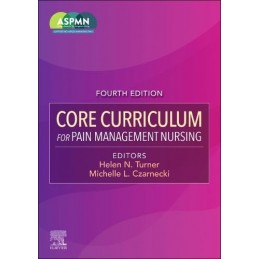- Reduced price

Order to parcel locker

easy pay


 Delivery policy
Delivery policy
Choose Paczkomat Inpost, Orlen Paczka, DHL, DPD or Poczta Polska. Click for more details
 Security policy
Security policy
Pay with a quick bank transfer, payment card or cash on delivery. Click for more details
 Return policy
Return policy
If you are a consumer, you can return the goods within 14 days. Click for more details
Data sheet
1. Physiology of Pain
2. Current Pain Theories: How We Arrived Here
3. Mental Health Disorders and Pain
4. Essential Ethics for Pain Management Nursing
5. Impact of Pain and Benefits of Pain Management
6. Nursing Process for Pain Management
7. Research and Quality Improvement in Pain Management Nursing
8. Advocacy in Pain Management Nursing
9. Advanced Practice Pain Management Nursing
10. General Principles of Pain Assessment
11. Pain Assessment Tools Across the Lifespan
12. Risk Assessments Related to Pain Management
13. Intrapersonal Relationships/Influences of Emotions, Sleep, Fatigue, Nutrition, Obesity, and Eating Disorders With Pain
14. Overview of Pain Assessment, Management, and Select Clinical Practice Guidelines
15. Integrative and Complementary Therapies for Pain Management
16. Psychosocial Interventions for Pain Management
17. Pharmacological Pain Management Strategies
18. Cannabinoids for Pain Management
19. Interventional Pain Management
20. Procedural Sedation and Analgesia
21. Managing Persistent Pain
22. Managing Pain in the Context of Substance Use Disorder
Reference: 98563
Author: Jason Brumitt
Reference: 35404
Author: J. Peter Rubin
2-Volume Set with DVD - Expert Consult Premium
Reference: 92991
Author: Stephan Scharla
Reference: 100964
Author: Antonio Nanci
Development, Structure, and Function
